Crayfish (also sometimes called crawfish and crawdads) are freshwater crustaceans that live in lakes, ponds and rivers all over the world. Crayfish have many enemies and the most abundant predators of crayfish are larger freshwater fish!
Many different fish feed on crayfish and/or their spawn in natural freshwater environments. Studies on the stomach contents of fish suggest that the European Perch, Smallmouth Bass, Flathead Catfish and the Largemouth Bass are some of the most crayfish eating predators in North America!
Whereas crayfish can breathe for some time on land they do spend the vast majority of their life in lakes or streams.
Crayfish do not tolerate saltwater as salt as the sea, but some crayfish, like the Louisiana crayfish, may also live in brackish waters as they tolerate relatively high salt concentrations.
Because crayfish are not found in the ocean, we need to look into the larger predator fish of freshwater environments to figure out what fish species eat the most crayfish!
Whereas crayfish also have predators on land (that I have written about elsewhere) it is reasonable to assume that most crayfish eaten in the wild are indeed devoured by fish as they share the same habitat.
Contents
What fish species eat the most crayfish?
As a general rule, only larger fish feed on adult crayfish as it does require quite some strength for a fish to chew through the hard chitin shell of a fully grown shellfish!
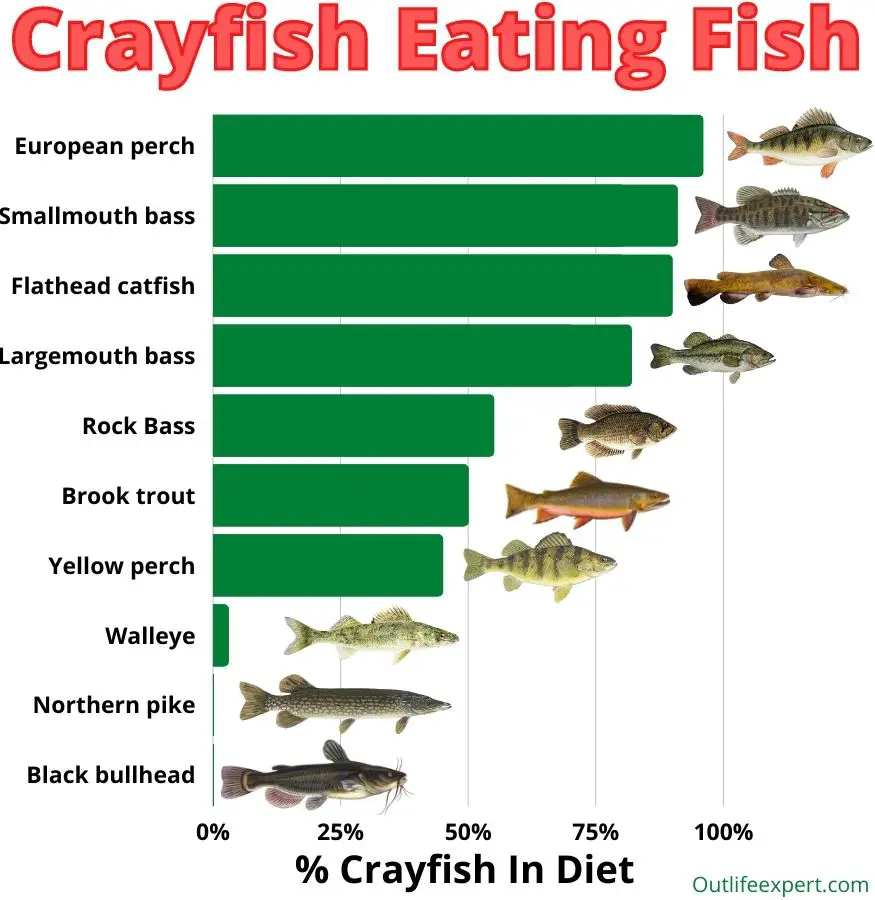
From different studies of the gut contents of freshwater fish in the US, Norway and Canada, we know what fish are most likely to feed on crayfish.
The fish most likely to eat crayfish in the US are:
- European perch
- Smallmouth bass
- Flathead catfish
- Largemouth bass
- Rock Bass
- Brook trout
- Yellow perch
- Walleye
- Northern pike
- Black bullhead
- Common Carp
- Spotted bass
These are all common freshwater fish in North America and studies carried out on crayfish and their fish predators in Michigan, Illinois, West Virginia, Kansas and Manitoba have revealed the feeding patters of these fish and their predation on crayfish.
The overall conclusions from these studies are that some fish hunt specifically for crayfish when in season and get most of their food from crayfish, whereas others, like the pike, hunt more broadly for smaller fish, snails and crustaceans but also crayfish when they happen to encounter one.
Fish that eat a lot of crayfish are:
- Smallmouth Bass
- Largemouth bass
- European Perch
- Yellow Perch
- Rock Bass
- Flathead Catfish
- Brook Trout
Surprisingly, for some of these fish, crayfish make up as much as 95% of their diet in the wild!
Fish that sometimes eat crayfish:
- Walleye
- Black Bullhead
- Northern Pike
- Carps
- Cichlids
For the opportunistic crayfish eating fish, crayfish usually make up just a smaller portion of less than 10% of their diet.
Let’s have a closer look at some of the most prominent crayfish eating fish below!
The Rock Bass
The Rock Bass, also called rock perch, is a large freshwater fish that can be found in rivers and streams all across North America. It is a member of the sunfish family, and is one of the smaller members of that family that also includes the smallmouth and the largemouth bass. The Rock Bass can grow to be up to 1.5 feet long, and weigh up to 3 pounds.
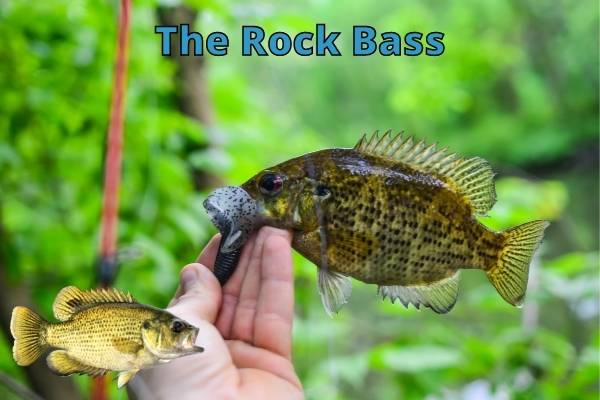
Crayfish make up a fairly large part of the Rock Bass’s diet. In fact, crayfish make up such a large part of their diet that half their stomach is made up of crayfish meat!
The Rock Bass is an opportunistic feeder, meaning that it will eat just about anything it can fit into its mouth. This includes crayfish, insects, small fish, frogs, and even small birds that fall into the water!
The Rock Bass will often wait near cover for prey to swim by before ambushing it and swallowing it whole.
Smallmouth Bass
The Smallmouth bass is a type of freshwater fish that is native to North America. They are typically found in streams, rivers and lakes. Smallmouth bass are olive green in color with dark vertical stripes running down their sides. They have a small mouth, hence their name, and can grow to be about 19 inches long.
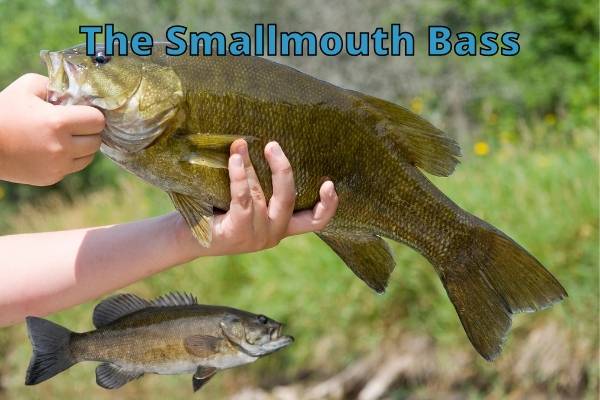
Smallmouth bass are opportunistic eaters and will eat just about anything they can find. Their diet consists not only of crayfish but also of insects, other fish and even frogs and mussels!
They use their sense of smell to locate crayfish and then ambush it by hiding in the vegetation near the water’s edge and striking when the crayfish is close enough.
Flathead Catfish
The flathead catfish is a freshwater fish that is found in North America. It is a large and stocky fish, with a broad head and large, flat scales. It can grow to be over 4 feet long and weigh over 100 pounds!
The flathead catfish is an opportunistic eater of crayfish, and will really just eat about anything it can find. This includes other fish, insects, frogs, crayfish, and even small mammals. But they will also scavenge for dead fish!
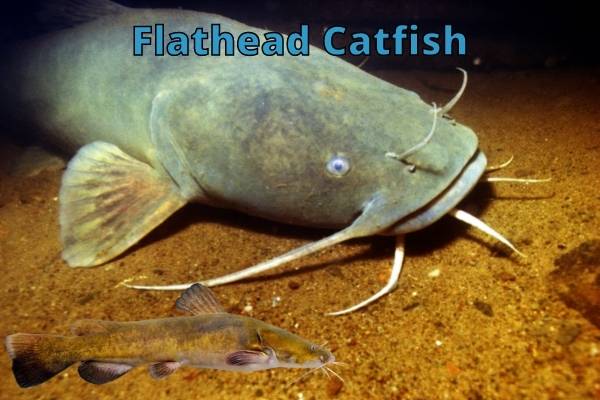
Crayfish make up a significant part of the diet of the flathead catfish. These fish will often lie in wait near structures or areas where crayfish are likely to pass by.
When a crayfish comes close enough, the catfish will lunge out and snatch it up in its powerful jaws and often swallow it whole!
Largemouth bass
Largemouth bass are a type of freshwater fish that are native to North America. They are usually found in rivers, lakes and reservoirs.
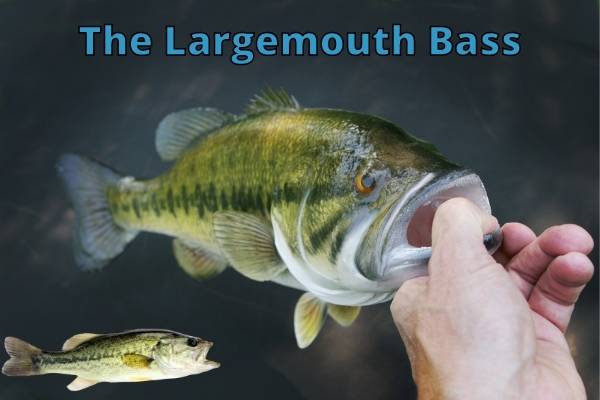
Largemouth bass are predators and their diet consists of smaller fish, frogs, crayfish, insects and aquatic invertebrates.
They use their keen sense of smell and sight to find their prey. When they see a crayfish, they will quickly swim towards it and open their large mouths to eat it whole!
The European Perch
The European perch is a freshwater fish that is native to Europe and Asia but is also found throughout North America. It can be found in lakes, rivers, and streams. The diet of the European perch consists of small fish, insects, crustaceans, and mollusks.
One way the European perch finds and eats crayfish is by using its sense of smell and water motion detection. When it finds the crayfish it attacks several times with its sharp teeth to snag the crayfish from the bottom of a lake.
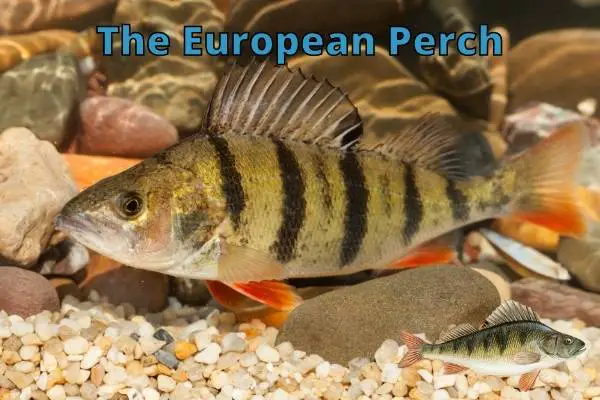
Once the crayfish is caught, the European perch will then use its strong jaws to pull the crayfish into its mouth for consumption.
In my own experience with fishing, the Perch always bites a larger bite than it can chew! Therefore it is not hard to imagine that it, despite its relatively small size, will take on even adult crayfish for dinner!
Do Walleyes Eat Crayfish?
The walleye is a freshwater fish that is found in North America. It is a popular game fish, and is known for its delicious taste. The walleye’s diet consists of smaller fish, crayfish, insects, and worms.
Walleyes do indeed eat crayfish and 2% to 5% of the average walleyes diet consists of crayfish. That is, they are not primarily crayfish eaters, but rather opportunistic crayfish feeders that eat crayfish when they happen to be abundant in their environment.
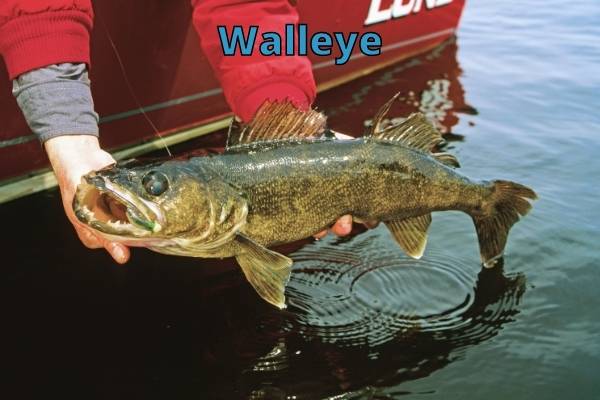
Whereas smaller juvenile Walleyes may have a hard time fitting crayfish in their mouth, the adults can be up to 30 inches and 20 pounds in size, so they will easily fit an adult crayfish in their mouth!
The walleye uses its sense of smell to find food in the water. When it smells something that it wants to eat, it will open its mouth and suck in the water (and the food).
Do Pikes Eat Crayfish?
Yes, pikes can eat crayfish, but crayfish constitutes only a minor part of their diet. As I wrote earlier in this article, the northern pike is an opportunistic feeder that will occasionally eat crayfish, but it constitutes a minute (<1%) of their average diet.

How Do Fish Eat Crayfish?
Well, fish are not super sophisticated when it comes to preparing shellfish for dinner. Smaller fish usually just bite aggressively towards the crayfish until they rip off their pinchers or bite off their tail.
The most typical scenario for large fish, however, is that they simply suck in the entire crayfish and swallow it in one go!
They sense the crayfish through their sense of smell, detecting chemicals and faecal excretions from the crayfish.
Most fish also have sophisticated movement sensory system that allows them to sense sudden movements in the water. During the day, they also rely on their eyes to detect the crayfish discernible red colours.
Do (African) cichlids eat crayfish?
Cichlids are a freshwater species of fish that are native to Africa. They are a very diverse group of fish, with over 2000 different species!
Cichlids are mostly herbivores, but there are some that are omnivores and even carnivores. These fish mainly eat algae, plants, insects, and small crustaceans.
One type of cichlid that is an omnivore is the African cichlid. This particular cichlid will eat just about anything, including other smaller fish! But their diet also includes crayfish!
In an aquarium, it is very hard to keep African cichlids and crayfish together, as the cichlids will try to eat your crayfish as they grow larger!
The African cichlid will find crayfish by digging through the sand and mud at the bottom of rivers and streams. Once they find one, they will use their strong jaws to crack it open or eat it whole!
Do Barbel Eat Crayfish?
The barbel is a freshwater fish that is native to Europe and Asia. It is a member of the carp family and can grow to be quite large, up to four feet in length!
The barbel’s diet consists mostly of small invertebrates such as insects, crustaceans, and mollusks. They will also eat small fish and also occasionally crayfish, but crayfish are not a major part of the barbels diet.
To find these food items, the barbel uses its sensitive barbels (whiskers) that are located around its mouth. These whiskers help the barbel locate food in murky water or in areas with little to no light.
Do Plecos Eat Crayfish?
Plecos (plecostomus) fish are a type of freshwater catfish that are native to South America. Pleco fish are bottom-dwellers and are often found in slow-moving or stagnant water.
Plecos are omnivores scavenger fish and their diet consists of algae, small invertebrates, and detritus but they do not tend to attack and eat animals like crayfish!
Rather, they mostly eat plant material and they use their sucker-like mouths to scrape algae off of rocks and other surfaces in the wild.
In captivity, they can be fed commercial algae wafers or blanched vegetables.
Do Algae Eaters Eat Crayfish
Algae eaters are popular cleaner fish in aquariums and often include scavenger fish like the pleco catfish described above.
These fish do tend to be herbivore scavengers and are therefore not putting the crayfish at risk.
Quite the contrary – you may risk that your crayfish reaches out after your small algae eater fish!
Do Chub Eat Crayfish
Yes! Chubs have a variety of different diets depending on the species, but they all generally eat small invertebrates like insects, worms, and some crustaceans – including juvenile crayfish!
Chubs are small, stocky freshwater fish that can be found in rivers and streams all over the world. In North America, they are most commonly found in the Great Lakes region.
They have a very keen sense of smell which they use to locate food in the water. When they find a crayfish, they will attack it multiple times and eventually rip it to pieces that fit in their relatively tiny mouths.
Do Molly Fish Eat Crayfish
No, molly fish do not eat crayfish. They are partly opportunistic feeders, but they are too small to attack and eat crayfish.
Molly fish are a freshwater fish that are native to North America. They are a popular aquarium fish because they are very peaceful and easy to care for.
Molly fish diet consists of algae, small invertebrates, and plants.
On the other hand, if a crayfish sees a weakened or dead molly fish, it will not think twice about eating it!
Do Tilapia Eat Crayfish?
Tilapia fish are a popular subgroup of cichlid fish that are often farmed for food. They are a freshwater fish, and can be found in tropical climates.
Tilapia fish are mostly omnivores, which means that they will eat both plants and animals. In the wild, tilapia will eat algae, insects, crustaceans, and even smaller fish.
Some tilapia fish can find and eat crayfish as part of their diet by looking for them in areas where there is vegetation.
Crayfish like to hide among the plants, so tilapia will look for them there. When they find a crayfish, they will use their powerful jaws to crush it and then swallow it whole.
Do Bluegill eat Crayfish?
The bluegill is a small, freshwater fish that is common in North America. It has a dark body with blue and purple stripes running along its sides. The bluegill is a popular sport fish because it is relatively easy to catch.
As part of the perch family, the bluegill will eat crayfish but crayfish are not the main part of the bluegills diet.
The bluegill feeds on insects, small crustaceans, and other small aquatic creatures. To find food, the bluegill uses its sensitive barbels (whiskers) to detect movement in the water. When it finds an edible creature, it sucks it into its mouth and swallows it whole.
Do Carps Eat Crayfish?
Carps are a type of freshwater fish that is popular in many parts of the world, especially Asia. They are a versatile and hardy fish, able to survive in a variety of environments.
One of the things that carps are known for is their love of eating crayfish! In fact, they will often eat so many crayfish and shrimps that their scales take on a reddish hue from the carotenoids in the shells – just like flamingos get their color from shrimps!
Carps typically find and eat crayfish by foraging around in shallow waters where the crayfish live.
Do Oscars Eat Crayfish?
Yes, oscars (also known as velvet cichlid or marble cichlid), like other large cichlids, will attack and eat crayfish if hungry enough!
Oscars are a type of fish that is native to South America. They are known for their bright colors and patterns.
They can be found in a variety of habitats, but they prefer areas with slow-moving water and plenty of hiding places.
Oscars are opportunistic predators, meaning they will eat whatever food is available to them. Their diet consists mostly of insects, small fish, crustaceans, and snails.
They use their keen sense of smell to locate food, and they will often dig through the substrate to find buried prey like crayfish. When hunting crayfish, oscars will wait near burrows or hiding places and ambush their prey with a sudden forceful attack as it emerges.
Do Goldfish Eat Crayfish?
No. Goldfish are too small to attack and eat crayfish. However, crayfish may attack and eat weak or slow goldfish if kept together in a fish tank!
Do Koi Fish Eat Crayfish?
Koi fish are a type of freshwater fish that come in a variety of colors and patterns. They are native to East Asia but have been introduced to many other parts of the world. Koi are popular pets and can even be found in many public ponds as well!
Koi diet typically consists of algae, insects, and other small animals. However, koi have also been known to eat crayfish!
This is especially true if the crayfish are present in large numbers and the koi are feeling competitive for food.
Koi fish will sometimes attack and eat smaller fish and crayfish, so if you have koi AND crayfish in your pond, it’s best to keep an eye on them to make sure everyone is getting along.
However, it will not hurt the koi fish to eat crayfish as they are a natural part of their diet.
Do Rainbow Trout Eat Crayfish?
Rainbow trout are a type of freshwater fish that are popular in both commercial and recreational fishing. They are native to cold-water streams and rivers in North America, but have been introduced to other parts of the world as well.
Rainbow trout typically eat smaller fish, insects, and crustaceans. When it comes to crayfish, they will usually go for the smaller ones.
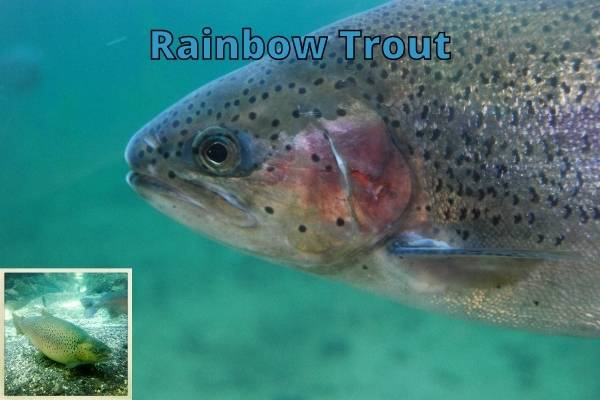
In terms of how they find and eat crayfish, rainbow trout will use their sense of smell to locate them in the water. Once they find them, they will use their sharp teeth and strong jaws to bite off the legs and claws before swallowing them whole.
Do Brook Trout Eat Crayfish?
Most trouts will eat crayfish if they encounter them. Brook trout are a type of freshwater fish found in cold-water streams and rivers of North America. Their bright coloring makes the brook trout a popular game fish, and many people enjoy catching and eating them.
Brook trout feed primarily on insects, crustaceans, and other types of invertebrates. When it comes to crayfish, they will usually go for the smaller varieties, such as redclaw crayfish.
They’ll usually swim in shallow water and slowly move their tail up and down to help stir up the sediment on the bottom of the creek. In doing so, they’ll stir up crayfish hiding beneath.
Do Eels Eat Crayfish?
Eels are elongated, snake-like fish that are found primarily in saltwater. They are mostly nocturnal and live in dark environments.
However, some freshwater eels like the African lungfish or Asian swamp eel do eat smaller crustaceans and will occasionally feed on crayfish if present in their environment.
Eels have very powerful teeth. On the whole, eels are not picky eaters, and they are known to eat just about anything they can fit in their mouths.
However, as crayfish are freshwater and not saltwater creatures, most eels rarely have the chance to seek them out – except from when they migrate to freshwater streams to lay their eggs.
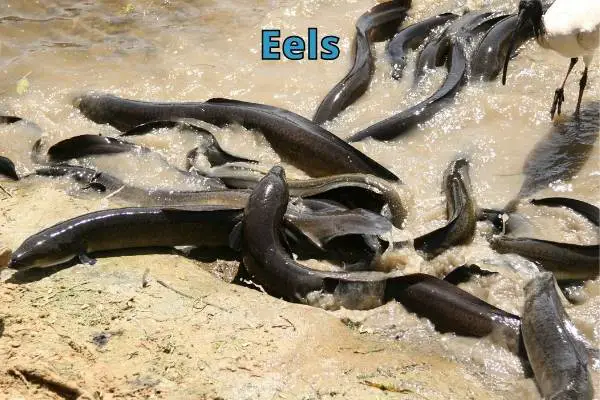
When it comes to crayfish, they will usually go for the smaller species. However, eel size and species varies, with some eating only shrimp, crab, or insects.
Eels locate the crayfish (including crayfish traps) by detecting the vibrations of its burrowing activities. Once they detect it, the eel uses its sharp, pointed teeth to bite off the legs and claws before swallowing it whole.
Do Flatheads Eat Crayfish?
The Flathead catfish is a species of freshwater catfish in the family Siluridae. It is native to large rivers and streams in North America, but has been introduced to other parts of the world as well.
Flathead catfish are opportunistic feeders and will eat just about anything they can find. This includes smaller fish, frogs, reptiles, mammals, and crustaceans.
When it comes to crayfish, they will usually go for the smaller ones.
In terms of how they find and eat crayfish, flathead catfish will use their sense of smell to locate them in the water. Once they find them, they will use their sharp teeth to bite off the legs and claws before swallowing them whole.
Conclusion
In this blog post I have gone through some of the most prominent fish that eat crayfish as part of their diet.
Although fish are the animals that account for the most eaten crayfish, there are also many land dwelling animals that eat crayfish, which I have written another article about here.
Most fish will hunt for food, but some types are completely predatory. Some fish eat crayfish as the main part of their diet, while others are omnivore and opportunists, eating plants and many different animals.
We have to remember that most fish are omnivores, and they will eat a variety of things when accessible if it fits in their mouth!




